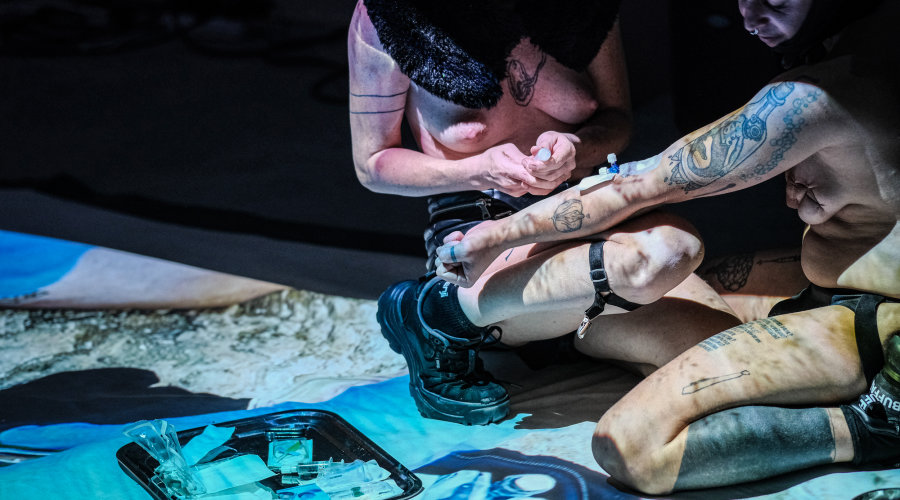“Hunger is want. It’s a broader desire than desire. It isn’t the will, which is strength.
Neither is it a weakness, for hunger doesn’t know passivity. They who hungers searches.”
Amelie Nothomb, The Life of Hunger
We present a ritual kitchen-lab with bodies of bacteria, skin, fungi, code, fluids, language, organs, prosthesis, affections, pills, hormones, sexes, smells... And a lot of pacts, plays, negotiations and diagnoses to feed ourselves with voracious desire.
The performance is a combination of different techno-emotional states lived through a series of stages: blood extraction, a motley of ingredients, preparation and tasting. Cannibalism begins with a kiss, so we invent other ways of eating, feeding, sucking. We capture blood, modify it, reinvent it and serve it to be poetically and pleasurably tasted. Blood in this performance hints not only at virus transmission as a hazard, but also at cannibalism as a possibility. Blood is the chance for contamination, for letting ourselves be inhabited by flows of contradictory knowledge. It is also the possibility of getting rid of human oneness.
This performance is the result of research and experiments developed in biomedical-labs and kitchens, as well as drifts of a love relationship, a desire to capture intensities and a search for new ways of translating them without losing the poetry in the process. How to keep the smells when we are together? How to reproduce them? How can we eat each other?
Hemoglophilia is a made-up word, from Greek in which philia signifies love. Thus it could be love for the red pigment that dyes blood and oxygenates tissues with sexual perversions. It could also be the experience of intense sexual arousal and a hunger towards objects, bodies and practices. And an attempt to get beyond diagnoses of mental disorders. Hemoglophilia is to add a B to DSM.*
The performance is an invitation to an extravagant dinner where we share an exhibitionist intimacy. It is a lab where petri-dish cultures become edible. Hemoglophilia is for playing with our identities, with the hormones that transit our bodies. It´s a surgery of prosthesis: fluids, blood and testosterone.
* The Diagnostic and Statistical Manual of Mental Disorders (DSM), published by the American Psychiatric Association, offers a common language and standard criteria for the classification of the mental disorders.









